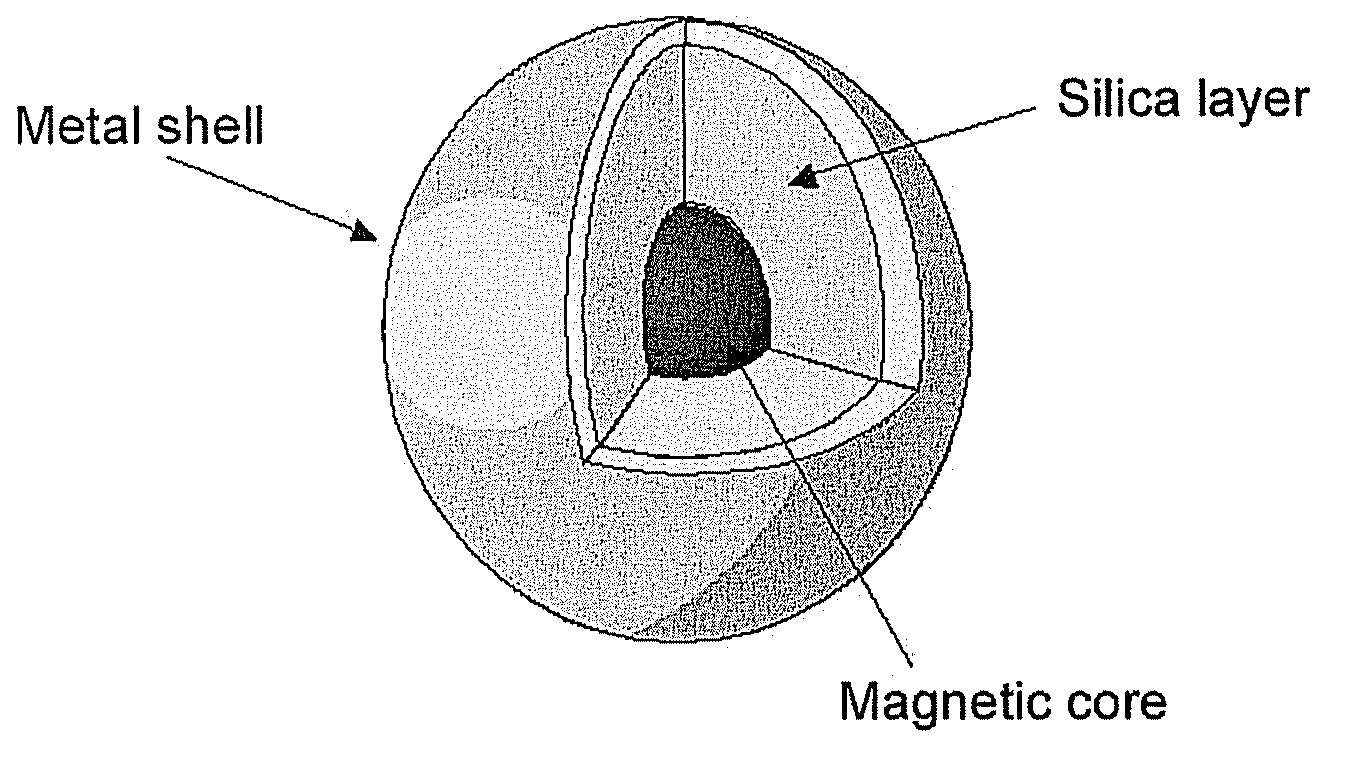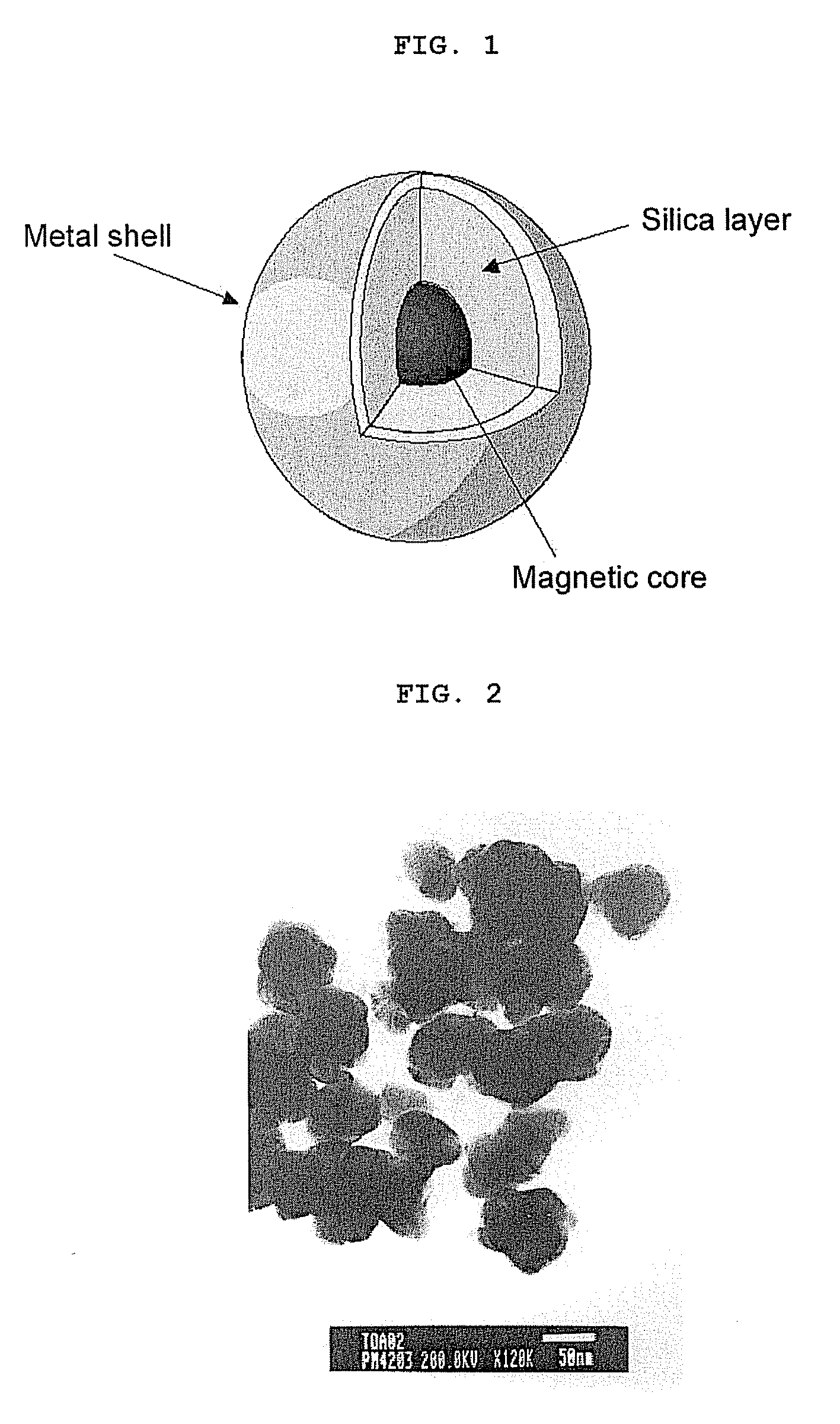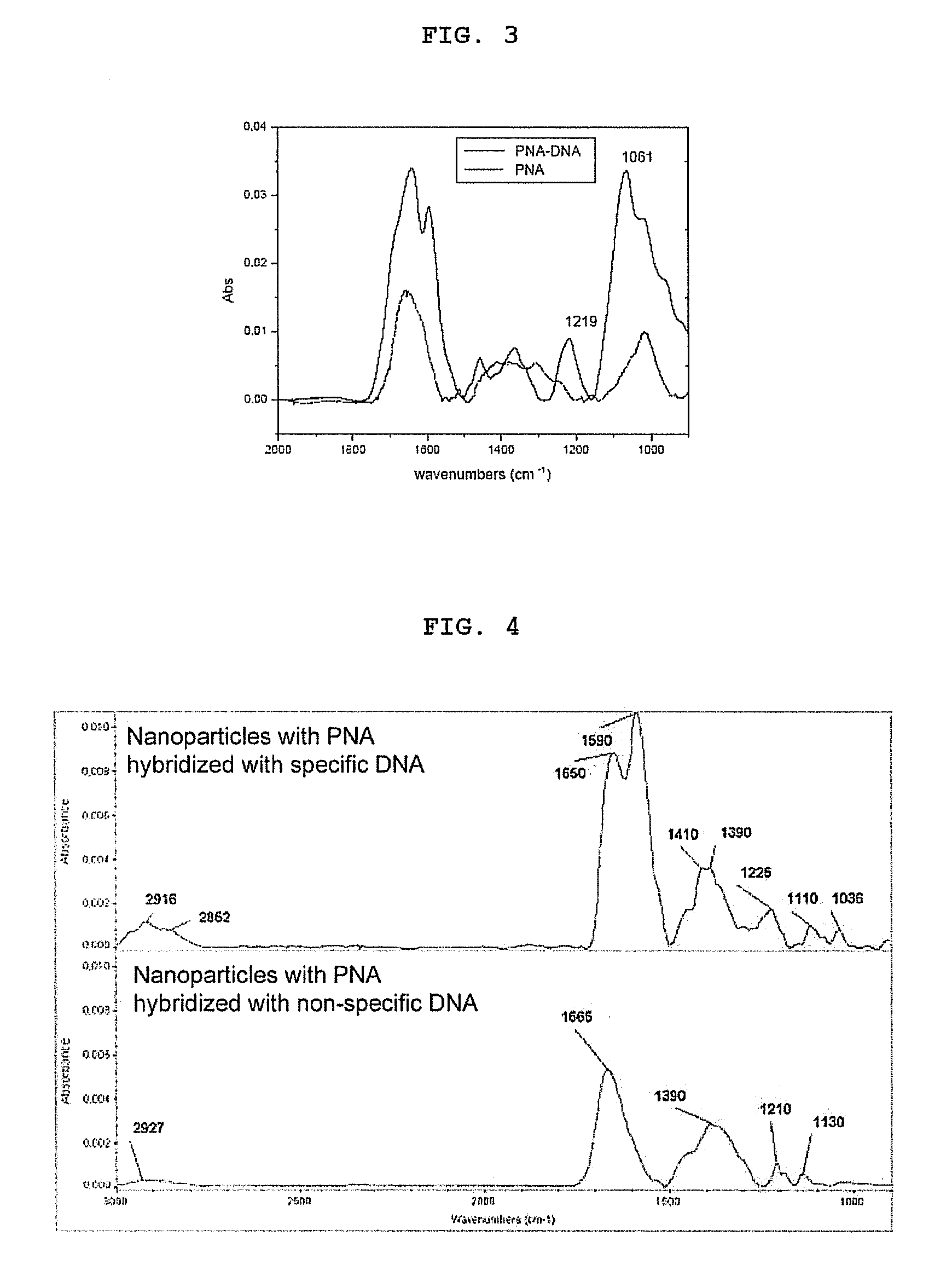Nanoparticle biosensor, method of preparing same and uses thereof
a biosensor and nanoparticle technology, applied in the field of nanoparticle biosensors, can solve the problems of high particle size distribution, destabilizing suspension, and limited detection limits of these techniques, and achieve the effects of reducing the sensitivity and detection limit of these techniques, and reducing the detection rang
- Summary
- Abstract
- Description
- Claims
- Application Information
AI Technical Summary
Benefits of technology
Problems solved by technology
Method used
Image
Examples
example 1
Synthesis of the Metalized Magnetic Nanoparticle Biosensors of the Invention
example 1.1
Gold Nanoparticle Biosensors
[0135]The initial object of this embodiment is to prepare a magnetic suspension formed by cobalt ferrite (CoFe2O4) nanoparticles with a uniform size, coated with a thin silica layer functionalized with amino groups, plus a final coating with a gold layer (as shown in FIG. 1) on which the thiolated PNA molecules will be chemisorbed as an example of a biosensor molecule. The silica coating takes place on the magnetic nanoparticles individually, also being able to obtain the coating several magnetic cores simultaneously. The nanoparticles thus prepared comply with the properties sought: they are stable in suspension for a long time period, but they sediment in the presence of a magnetic field. Furthermore, by removing said magnetic field, the nanoparticles must be dispersed upon applying a gentle stirring.
[0136]In one particular example, cobalt ferrite with an inverse spinel structure has been used, synthesized to a size of 17±3 nm, with suitable magnetic pr...
example 1.2
Synthesis of Gold / Silver Alloy Nanoparticle Biosensors
[0146]The process of obtaining nanoparticles coated by a Au / Ag alloy is based on reducing silver ion on the magnetic nanoparticles decorated with gold nanoparticles obtained as indicated in section 1.1. To that end, 500 μl of the ferrofluid decorated with gold particles, 400 μl of 0.5 M glycine, 600 μl of water (with Milli-Q purity), 20 W of 12 mM AgNO3 and 100 μl of 10 mM ascorbic acid were placed. This solution is left at room temperature and in darkness for 6 hours, the nanoparticles are washed by magnetic sedimentation three times, re-suspending in 500 μL of water each time, and the process is repeated (Huang et al., 2004). The immobilization of the PNA molecules is carried out as will be detailed in Example 1.4.
PUM
| Property | Measurement | Unit |
|---|---|---|
| Nanoscale particle size | aaaaa | aaaaa |
| Nanoscale particle size | aaaaa | aaaaa |
| Nanoscale particle size | aaaaa | aaaaa |
Abstract
Description
Claims
Application Information
 Login to View More
Login to View More - R&D
- Intellectual Property
- Life Sciences
- Materials
- Tech Scout
- Unparalleled Data Quality
- Higher Quality Content
- 60% Fewer Hallucinations
Browse by: Latest US Patents, China's latest patents, Technical Efficacy Thesaurus, Application Domain, Technology Topic, Popular Technical Reports.
© 2025 PatSnap. All rights reserved.Legal|Privacy policy|Modern Slavery Act Transparency Statement|Sitemap|About US| Contact US: help@patsnap.com



